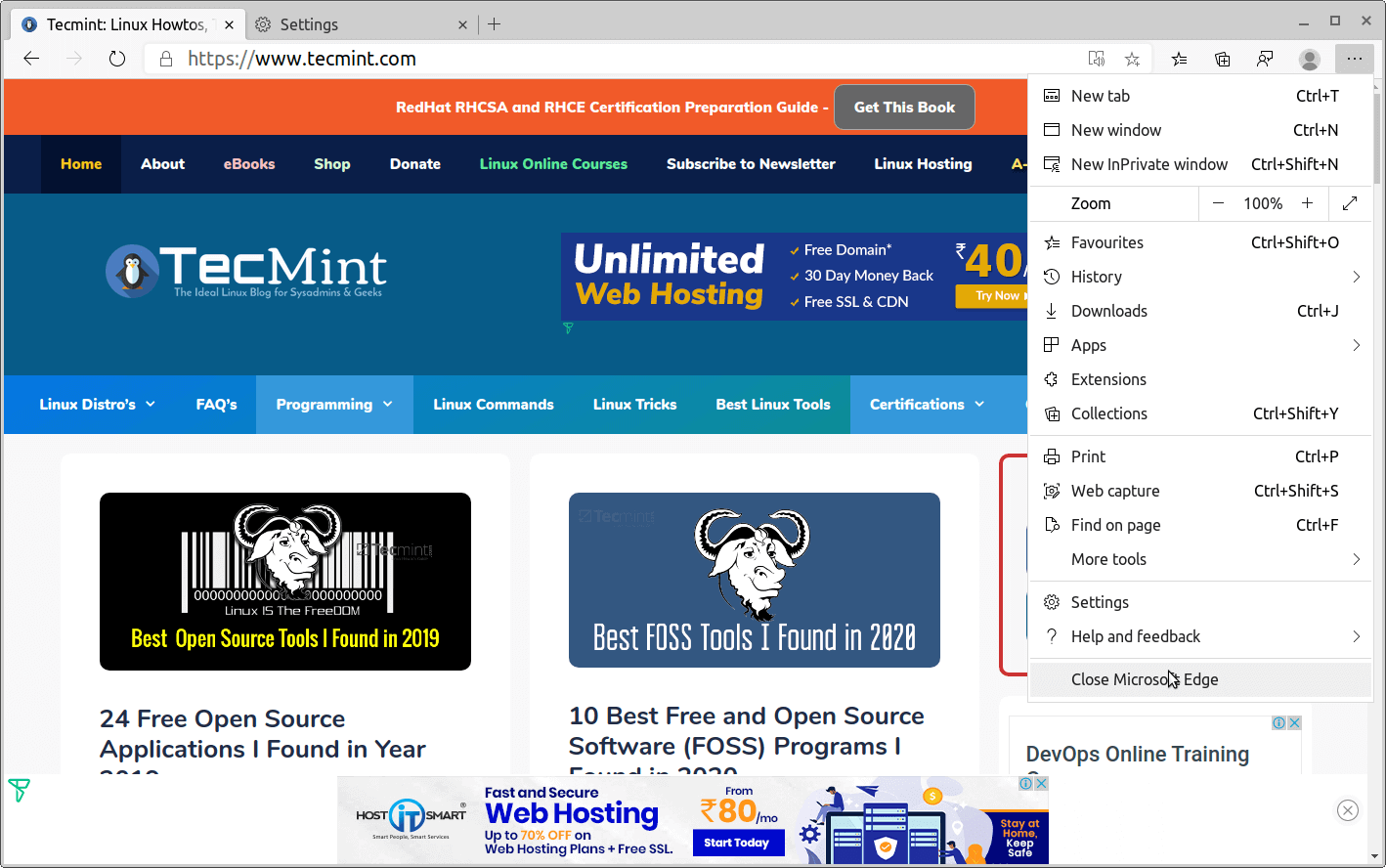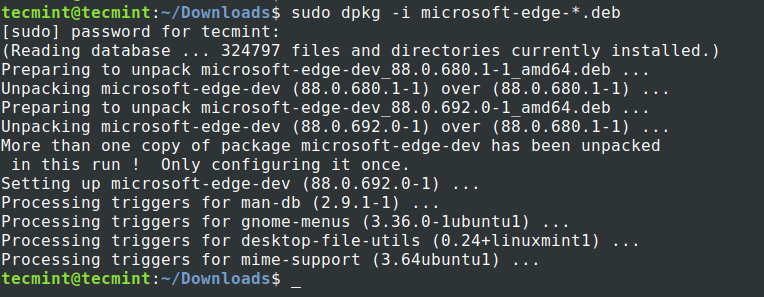Long gone days where Microsoft products are not open-source and architected only for Windows. In their efforts to make a strong footprint in the Linux market, Microsoft has announced on “Microsoft Ignite 2020” Edge browser is available for Linux as a dev preview.
Edge browser is initially released with Windows 10 followed by Mac OS, X Box, and Andoird. The Dev release is said to be a preview release aiming to have developers who want to build and test their sites and apps on Linux.
Some features like Signing in to Microsoft Account or AAD account are not available at the moment and it is expected for future build releases. As of now, Edge supports local accounts only.
The current release of Edge supports Debian, Ubuntu, Fedora, and OpenSUSE distribution. It is expected Edge will be available for more platforms in upcoming releases.

There are two ways to install Microsoft Edge on Linux.
- Download
.debor.rpmfile from Microsoft Edge Inside site. - Use the distribution package manager.
We will see both the ways on how to install Edge.
Installing Microsoft Edge Using .deb or .rpm File
First, download the .deb or .rpm file from Microsoft Edge Inside site and install the package as shown. It will add the Microsoft repository to your system, which will automatically keep Microsoft Edge up to date.
$ sudo dpkg -i microsoft-edge-*.deb [On Debian/Ubuntu/Mint] $ sudo rpm -i microsoft-edge-*.rpm [On Fedora/OpenSUSE]

Installing Microsoft Edge Using Package Manager
Now let’s see how to install Edge from the command line using the distribution package manager.
Install Edge on Debian, Ubuntu, and Mint
$ curl https://packages.microsoft.com/keys/microsoft.asc | gpg --dearmor > microsoft.gpg $ sudo install -o root -g root -m 644 microsoft.gpg /etc/apt/trusted.gpg.d/ $ sudo sh -c 'echo "deb [arch=amd64] https://packages.microsoft.com/repos/edge stable main" > /etc/apt/sources.list.d/microsoft-edge-dev.list' $ sudo rm microsoft.gpg $ sudo apt update $ sudo apt install microsoft-edge-dev
Install Edge on Fedora Linux
$ sudo rpm --import https://packages.microsoft.com/keys/microsoft.asc $ sudo dnf config-manager --add-repo https://packages.microsoft.com/yumrepos/edge $ sudo mv /etc/yum.repos.d/packages.microsoft.com_yumrepos_edge.repo /etc/yum.repos.d/microsoft-edge-dev.repo $ sudo dnf install microsoft-edge-dev
Install Edge on OpenSUSE Linux
$ sudo rpm --import https://packages.microsoft.com/keys/microsoft.asc $ sudo zypper ar https://packages.microsoft.com/yumrepos/edge microsoft-edge-dev $ sudo zypper refresh $ sudo zypper install microsoft-edge-dev
That’s it for this article. We have discussed two ways of installing the Edge browser on Linux. Though we have many browsers available in Linux, we have to wait and see how Edge is turning out to be in future releases. Install Edge, Play with it and share your experience with us.
